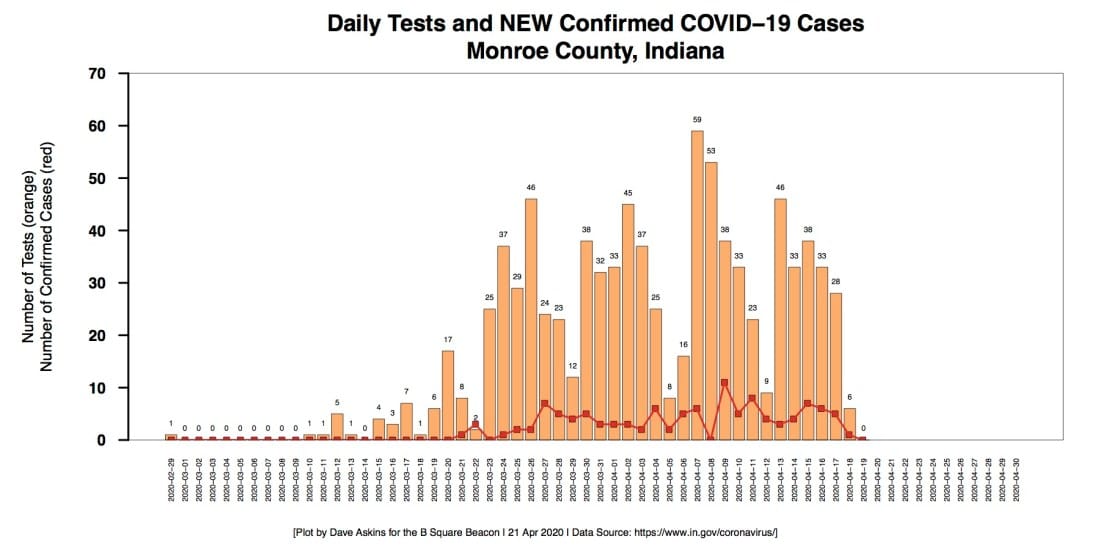County-level COVID-19 perspective includes Bloomington mayor’s negative test


On Monday, the city of Bloomington issued a press release announcing the city’s mayor, John Hamilton, had tested negative for COVID-19 after having flu-like symptoms.
Current testing protocols don’t yet include people who are asymptomatic except for first responders and health care workers.
The city had previously announced that Hamilton’s wife, IU law professor Dawn Johnsen, had tested positive on April 9 for COVID-19. She was hospitalized two days later. Monday’s press release says that Johnsen is expected to be discharged soon.
According to the press release, Hamilton’s test was done on April 18, last Saturday.
If Hamilton’s test was already reported to the Indiana State Department of health by Monday, then it was one of six COVID-19 tests recorded for Monroe County residents by that time in the state’s dataset.
The status of the data presented in the state’s dashboard is a little unstable, because new tests, new confirmed cases, and new deaths are slotted in where they naturally belong in the historical daily totals. For example, a death that’s a part of the report of new deaths on a given day will be added to the total for the actual date of death, not the date it was announced publicly.
Based on the data in the feed for the state’s dashboard, the most tests done on any given day so far in Monroe County was 59 on April 7. Since March 23, when testing in Monroe County started ramp up, along with other areas of the state, the county has averaged about 30 tests a day.
The increase in tests around March 23 was due in part to the a collaboration between the Indiana State Department of Health and Eli Lilly to increase the number of tests done. More recently, Indiana’s health commissioner, Kristina Box, has ordered that all tests, whether positive or negative, be reported to the state, so that the state’s department of health has a clearer picture of the amount of testing that’s being done in the state. Before Box’s order, only positive tests were required to be reported, even though many negative tests were being reported voluntarily.
One pattern in Monroe County’s testing numbers, which is to some extent reflected in statewide numbers as well, is a reduced number of tests done on Sundays compared to other days of the week.
The highest number of confirmed positive cases in the state’s dataset for Monroe County was logged on April 9, when 11 positive cases are recorded. Since April 9, the number of positive tests in Monroe County has averaged a bit more than 5 cases per day.
The breakdown by age shows percentage-wise slightly more cases in Monroe County than statewide in the 20-29 age category. Monroe County’s 18 cases in that age bracket make up 16 percent of the 114 Monroe cases compared to the 11 percent figure statewide.

The breakdown by race for Monroe County positive cases shows about 4 percent of the cases are Black, which is close to the percentage representation in the population. But the number of cases with unknown race is 10, or about 9 percent of the total number of cases.

Statewide a substantial amount of racial disparity is shown in the COVID-19 data.
Of the four deaths recorded in Monroe County so far, 2 were female, 1 was male and the fourth had unknown gender, according to the ISDH data. One of the deaths was a victim in the 50–59 age category, one was age 70–79, and the other two were over 80 years old. All four deaths were White, according to ISDH data. The dates of death were April 11, April 13, April 16 and April 17.
Monroe County’s confirmed positive cases are about evenly split between male (53) and female (55) with six unknowns.




Comments ()